How to prepare strawberries and strawberries for winter?
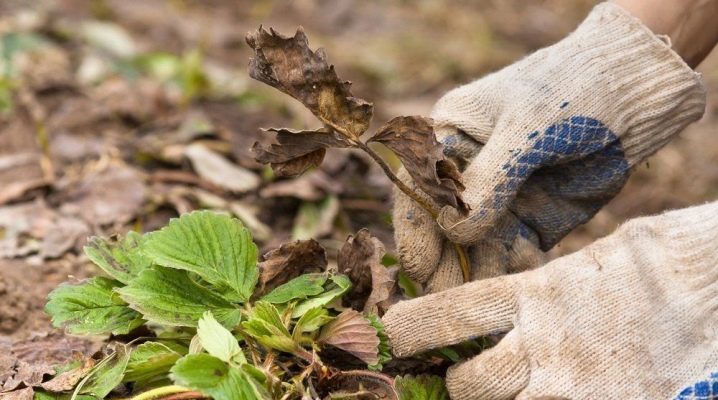
Summer harvest is the result of regular and proper care of strawberries and strawberries throughout the year. One of the important stages is the preparation of garden culture for winter. Often, the first stages of such work are carried out in the second half of the summer, immediately after the last harvest.

Timing
Gardeners begin to prepare berry beds for the cold at the end of summer, which not only protects them from freezing, but also makes it possible to successfully bloom and bear fruit next year.
List of preparation works:
-
pruning;
-
weeding;
-
pest control;
-
top dressing;
-
watering and loosening;
-
mulching;
-
shelter from frost.
Each area is characterized by certain weather conditions, humidity levels and the time of the onset of the first frost. Therefore, the exact timing of the preparatory work depends on the region.
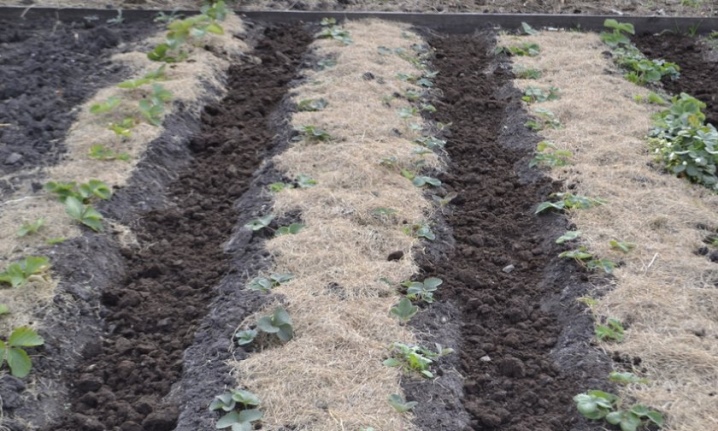
In outskirts of Moscow
Even in warm summers and mild autumn, it is recommended to carry out work in early September.
The culture will gain strength before wintering. In remontant varieties, all developing inflorescences are cut off.
This is also done for plants of the first year of planting.
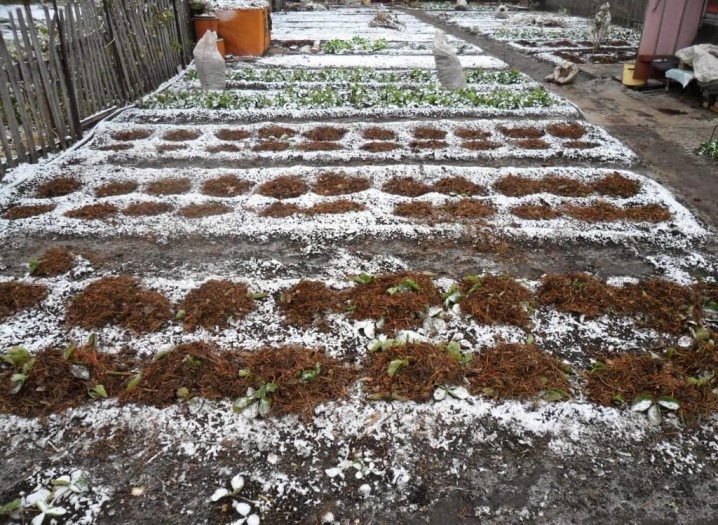
In the Leningrad region
In this climate, it often rains, so in August the bushes must be mowed. If you do not cut the leaves, then in the spring there are more chances of rot or fungal diseases. Cover after freezing of the soil.
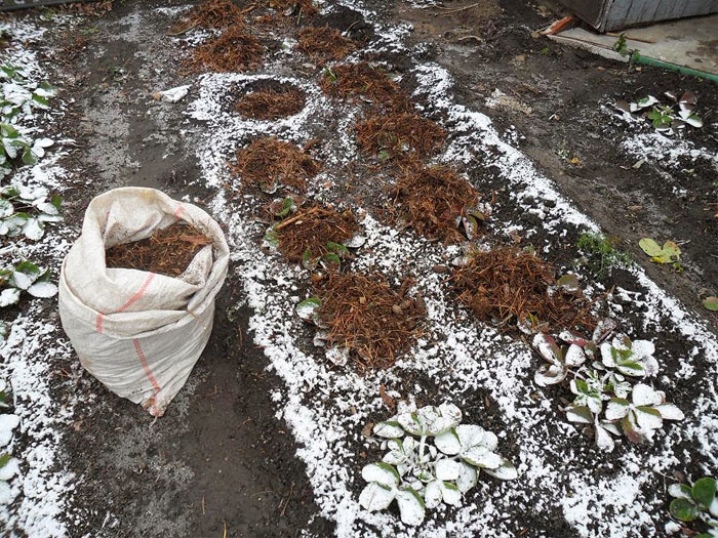
In the Urals
Unpredictable weather and the likelihood of early frosts are the main features of the region's climate.
Damaged and dry leaves are removed in the second half of July, full pruning is done at the end of August.
Bushes do not mow, because they do not have time to grow before the onset of cold weather.
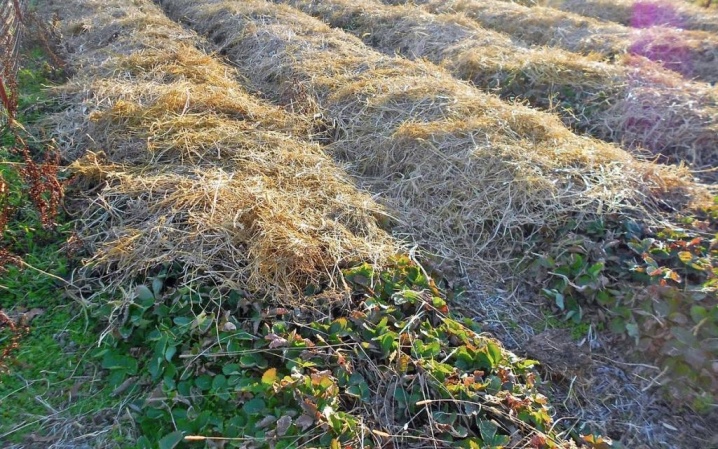
In Siberia
Early maturing varieties are grown more often. Preparation begins after the last harvest. In early August, old mulch is removed from the beds, dry parts are cut off, mustaches, peduncles, old bushes are replaced with new ones.
In remontant varieties, after the end of fruiting, dry leaves and whiskers are cut off. Pest treatment for ordinary strawberries is done in September - October, for remontant - in October - November. After deep weeding or during digging, manure is applied to the beds. Shelter in October - November.
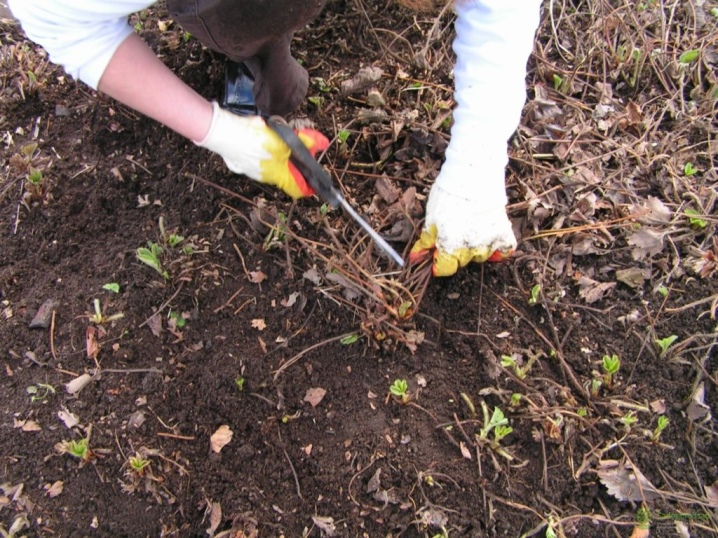
In a warm climate, in particular in the Krasnodar Territory, preparatory work is carried out from late September to mid-November, in central Russia - until the end of October, and in colder climates (Siberia, Ural) - until mid-October.
A transplant in the middle lane begins in the second half of September, in the southern regions - in the first decade of October. In the northern regions, it is better to transplant in the last month of summer. This will allow young plantings to take root before the onset of cold weather.
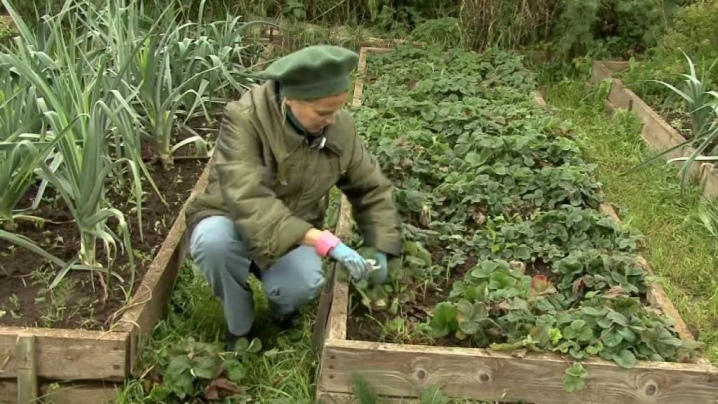
Watering features
In order to timely prepare garden strawberries and strawberries for winter, the first work is carried out in the middle of summer. During this period, it is important to properly care for the plants, it depends on how abundantly they will bear fruit next year.
A little pruning is done immediately after harvest. After flowering and fruiting, the berry needs a lot of moisture, the soil must always be moist. Generative buds begin to form in the bushes. Excess water is also contraindicated for plants.
It is important to carry out water-charging irrigation in the fall for the winter, especially for remontant varieties.
In dry weather, carry out weekly - 1 bucket per 1 m2 of warm water with a temperature of at least +18 degrees. Watered for the last time before the beginning of October.In cold rainy weather, the beds do not need to be moistened.

The nuances of trimming
Fruiting of common strawberries ends by mid-June, strawberries - in July. At this time, the first pruning is done: peduncles, old and dry leaves, excess mustache are removed. Until the end of summer, the plants will have time to grow new shoots. Only those bushes on which fungal diseases are noticed are completely cut off, then they must be treated with special compounds.
Pruning stimulates the active growth of new shoots and the formation of young leaves. The next procedure is carried out in the last days of August - early September.
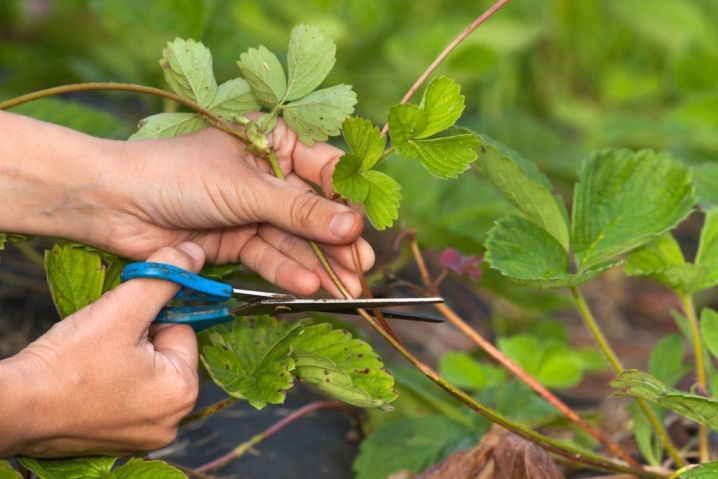
Whether or not there is a need to prune - every gardener has his own opinion on this. Some believe that diseases develop on old leaves and peduncles, harmful insects settle, so it is better to remove them and leave low stems. Others believe that after pruning, it takes a lot of energy to form new leaves, which will weaken the crop before wintering and next spring.
What care for strawberries and strawberries to choose in the fall, each summer resident decides on his own.
In any case, you should not cut at the root - always leave stems 5-8 cm.
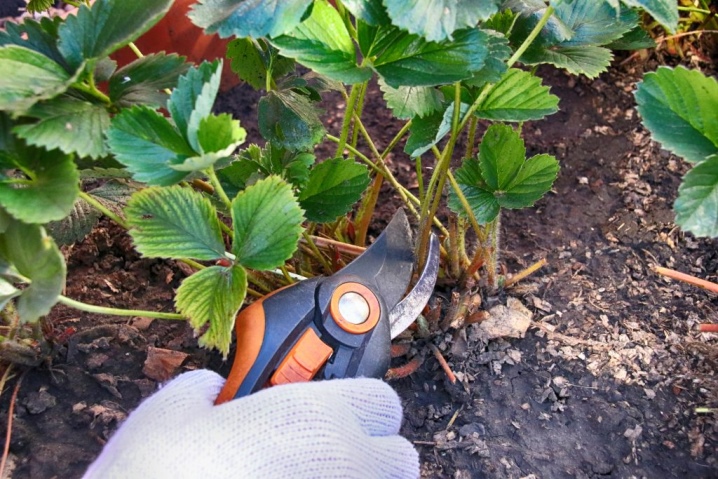
You can offer to carry out selective pruning.
You will need:
-
pruning shears or sharp garden shears;
-
gloves for hands;
-
disinfection solution.

How to carry out the work correctly:
-
disinfect the pruner by dipping it into the solution for a few seconds;
-
cut off only dry, damaged (interspersed and reddish), weakened and old shoots, leaving a growing point;
-
large strong leaves leave;
-
the mustache is cut off, leaving about 8 cm (usually the rosettes that formed on the first 2 mustaches are preserved for reproduction);
-
all sections are treated with a fungicide;
-
the mustache is trimmed for plants planted this year;
-
the cut parts are not left on the beds: bacteria and rot can develop on them.
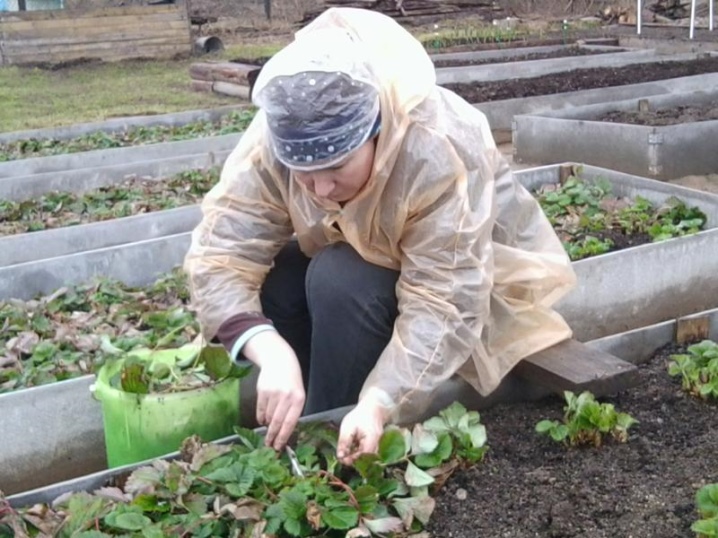
Repaired varieties are not advised to prune, since late removal of leaves will not allow the culture to recover to cold weather. Only peduncles, damaged or diseased shoots are removed. Do this in dry warm weather.
Some summer residents check the adaptation of the new variety, cutting off only part of the bushes on the site, and the rest do not touch. Next year it will be seen which ones will winter better and will bear fruit.
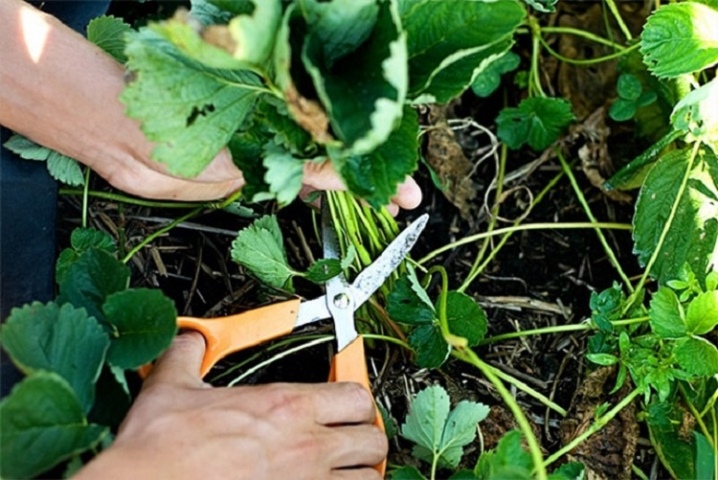
Loosening and feeding
In the warm season, strawberries and strawberries actively build up the root system. From watering or during the season of prolonged rains, the top layer of the soil is eroded. At the end of summer, it is necessary to hilling, this will protect the roots from freezing, in the spring it will become additional protection against pests and weeds, and will increase the quality of the crop.
Loosening in late autumn can damage the roots of the berry bushes. It is better to do this back in August. Saturation of the soil with oxygen has a positive effect on the subsequent growth and development of plants. The bushes are loosened, retreating 12-15 cm from the planting site.
Fertilizers help the berry culture to recover after the end of fruiting, increase winter hardiness and disease resistance.
It is advised to fertilize 3 times a year: in early spring, then after harvesting, nitrogen fertilizers are used to build up green mass, the last time - in the second half of September - early October before leaving for the winter.
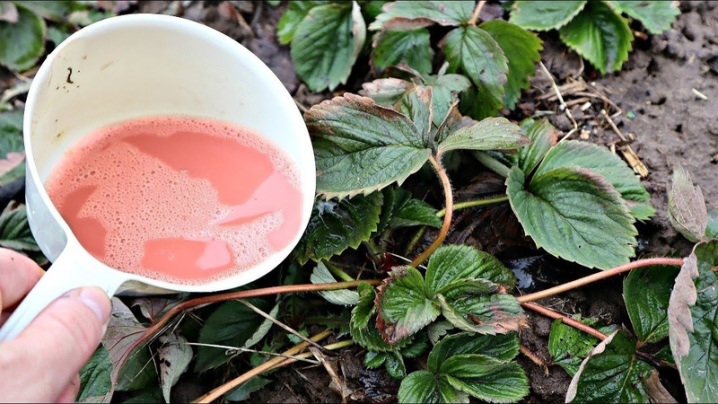
The procedure is carried out after partial foliage removal or pruning. Organic and mineral formulations are suitable. Each gardener chooses those fertilizers that he considers optimal.
-
Mullein. Take rotted mullein, charcoal or ash, water in the ratio: 1: 1: 10. A solution of mullein mixed with ash, insist 2-3 days, spill between the rows.

- Bird droppings. Dilute with water in a ratio of 1: 10, insist for about 2 days and apply fertilizer under the bushes, best of all in the aisles. They try not to get on the leaves.
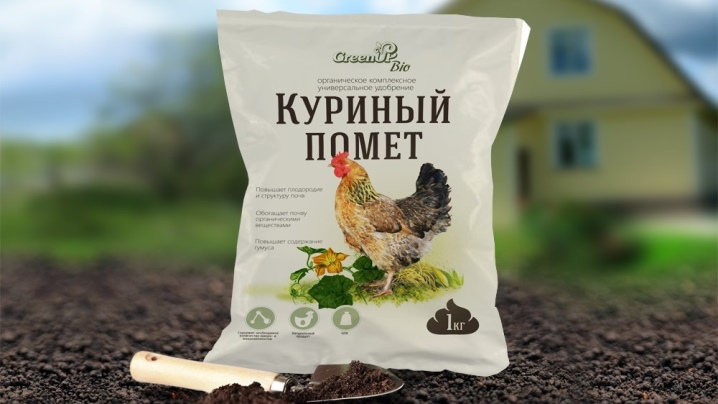
-
Ash. The proportion is about 150 g per 1 m2. Can be sprinkled dry, or added to liquid mixtures.
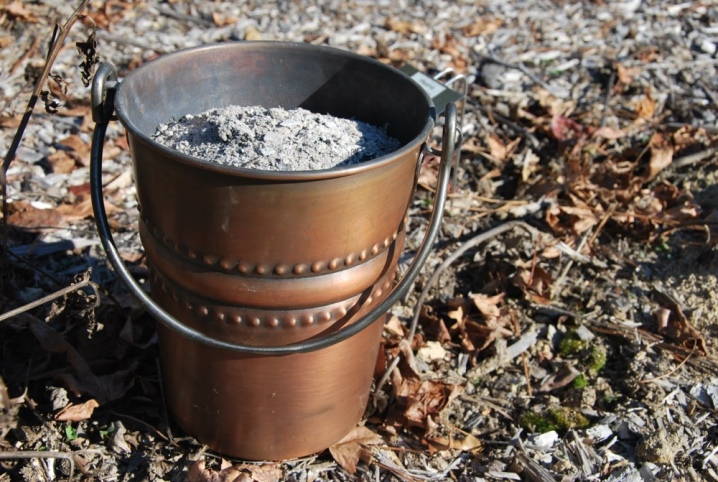
- Compost - unripe compost is laid out in autumn, which will warm the roots of plants and reach the required state during the winter. Stir with earth and bring under the root.
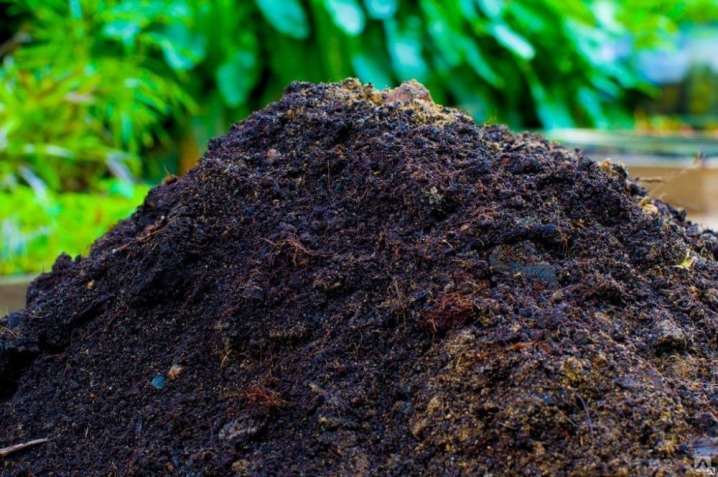
- Leguminous green manure, lupine stalks, grass cuttings - all this is strongly crushed and stacked between the rows.
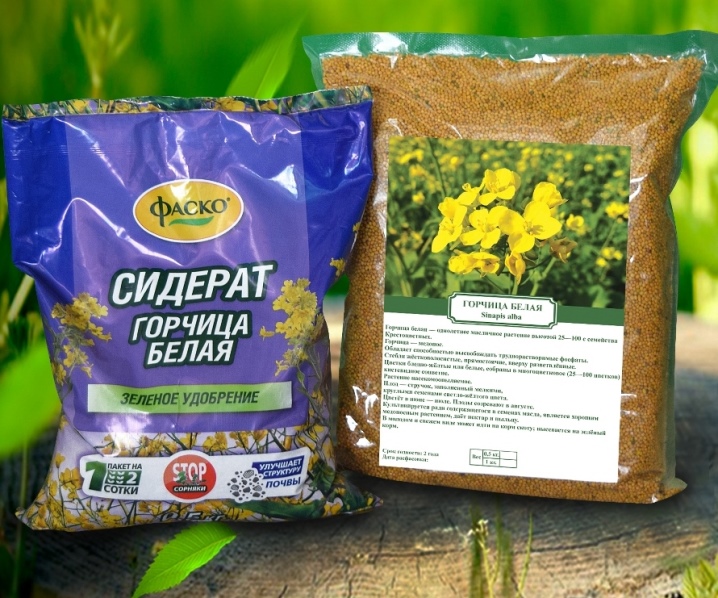
-
Complex fertilizers use in proportions according to the instructions.
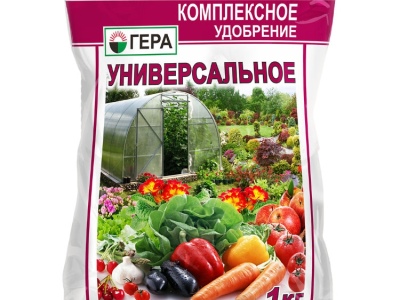
- Potassium salt. Pour 20 grams of the substance into 10 liters of water, the mixture is used for irrigation.

- Superphosphate. Dissolve in water (10 g per 10 l) and watered.
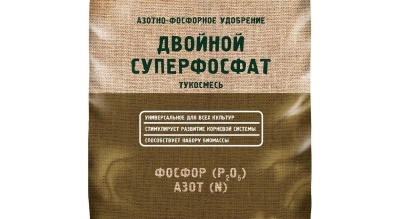
- Boric acid - 3 g, potassium permanganate - 2 g, 10 drops of iodine in 10 liters of warm, settled water. The norm is 1 liter for 1 bush.
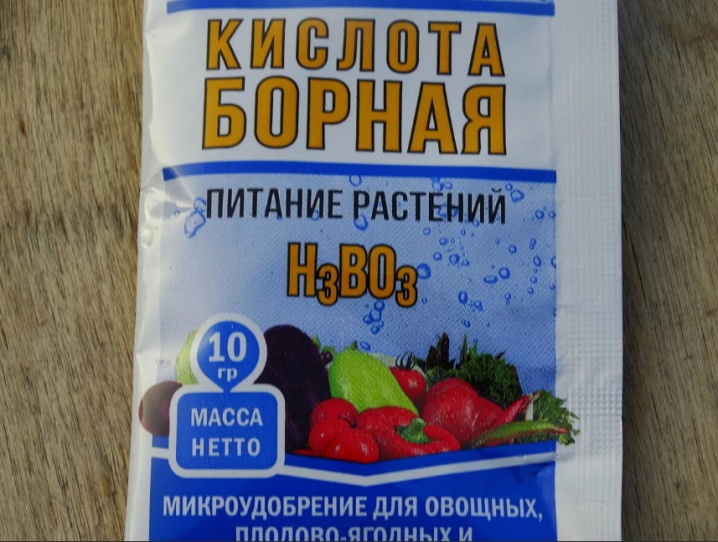
Manure, compost, bird droppings are advised to be used separately from limestone or ash.
It is not recommended to use fertilizers containing chlorine and nitrogen at the end of the season.
Rye, wheat, oats can be planted between the rows. These cereals are excellent green manures, they enrich the soil with useful substances and serve to warm the garden for the winter.
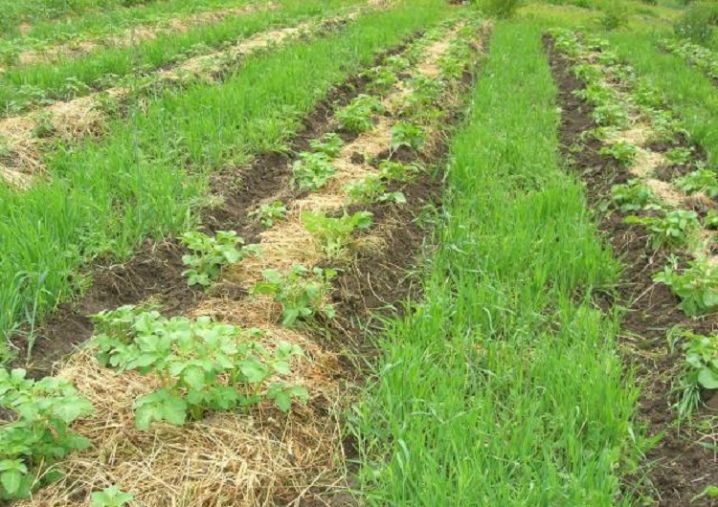
Mulching
This is an agrotechnical method that facilitates the work of gardeners and prevents the emergence of many crop diseases: first of all, late blight of roots, rhizoctonia, verticellosis. Mulch in the garden protects against temperature changes, drying out, overheating. Strawberries and strawberries are mulched several times per season.
For this:
-
loosen the soil;
-
remove weeds;
-
mustache, dry leaves are cut off;
-
make top dressing;
-
watered.
A gap of 1-2 cm is left between the stems and the mulch being poured. Organic compounds should be checked from time to time and rotted areas should be replaced.
Let's list the raw materials for mulching.
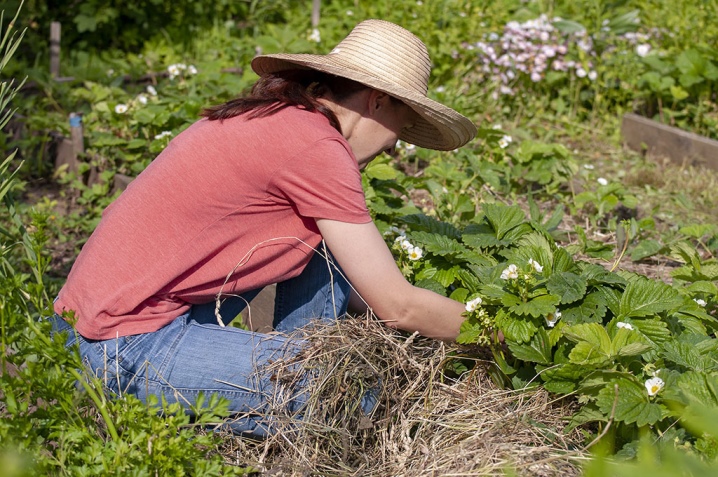
Straw
Apply only dry. It tends to take nitrogen from the ground. Usually combined with compost or rotted manure.
Often attracts rodents. Suitable for mulching after the last removal of the berries.
On loose substrates, a layer of 15–20 cm is laid, on clay - no more than 3-5 cm, after having cut it finely.
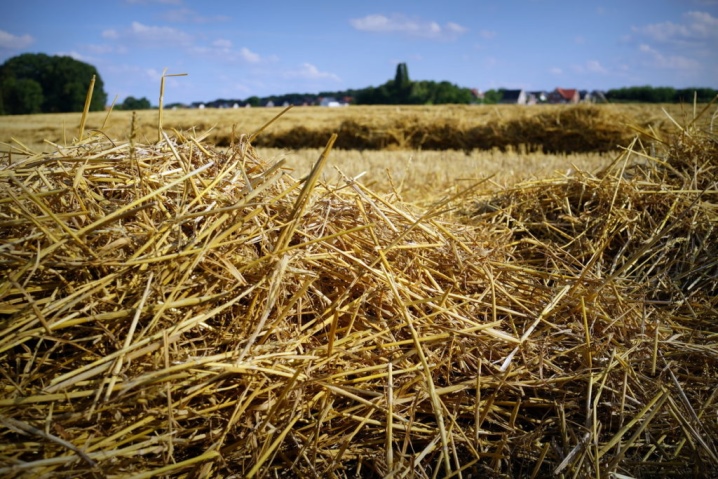
Needles
Contains a large amount of phytoncides and bactericidal components. Creates protection against diseases and pests. Great for winter shelter. The needles acidify the soil; to prevent this, they are watered with slaked lime (50g / 1 m2). Slightly crumbling needles are used, they are laid with a thickness of 3-5 cm. In the spring, they are shoveled or dug into the soil.
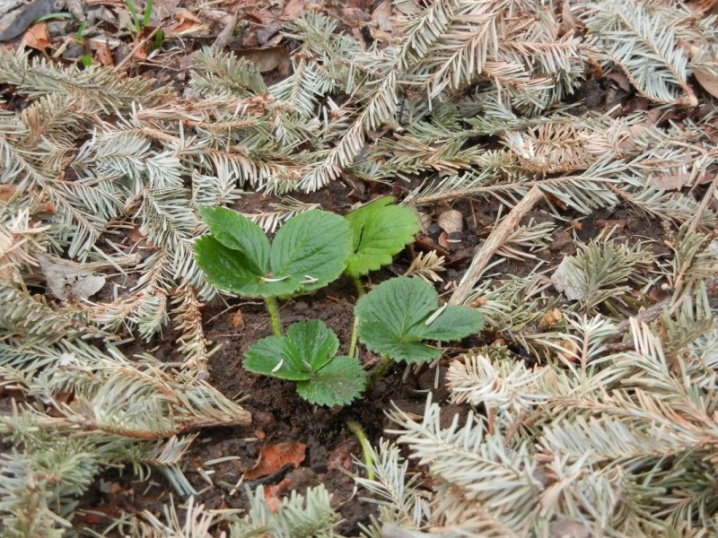
Tree bark
More often used pine or cedar, small or medium size. This material lasts up to 5 years.
Suitable for winter shelter. Does not overheat and does not freeze. A layer of 5–7 cm can be laid on the beds immediately after the last harvest.
Disadvantages - does not delay the evaporation of moisture, frequent watering will be required.
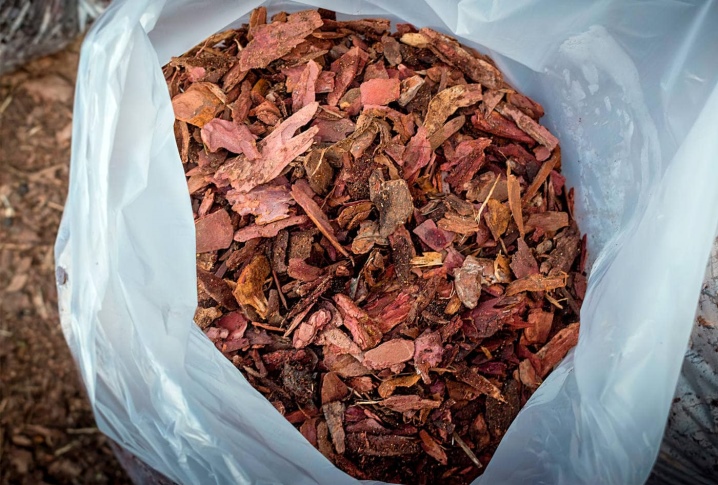
Sawdust
They will last up to 5 years. A good remedy for slugs and snails, it is difficult for them to move around small parts of wood. Strongly absorb moisture. Laying method: thin paper is spread on the ground and sawdust is scattered over it in a layer of 5 cm. Applied throughout the season.
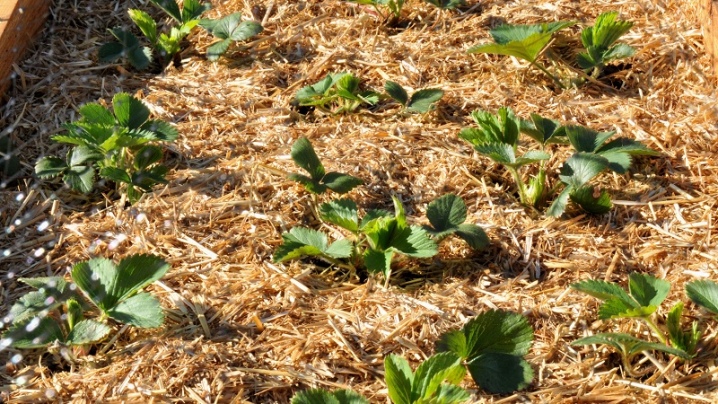
Hay
This type of mulch decomposes very well, which will provide the roots with abundant nutrition. Hay often contains weed seeds that will sprout in the spring. Pour in a layer of 10-15 cm.
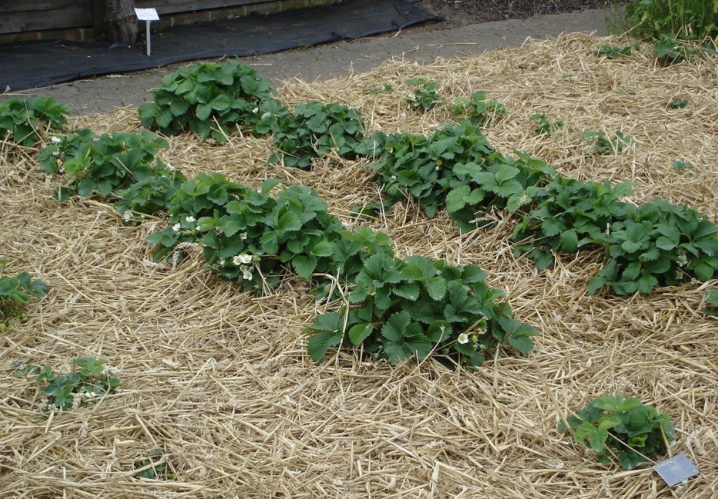
Peat
Low-lying peat is suitable for insulation, since there are many herbicides in the upper one, which can be harmful to strawberries. Peat is rich in macro- and microelements, organic matter, it regulates well the thermal and water regimes in the soil. Protects the roots from freezing even with a small snow cover. Placed in a layer 5–7 cm. Not recommended for acidic soils.
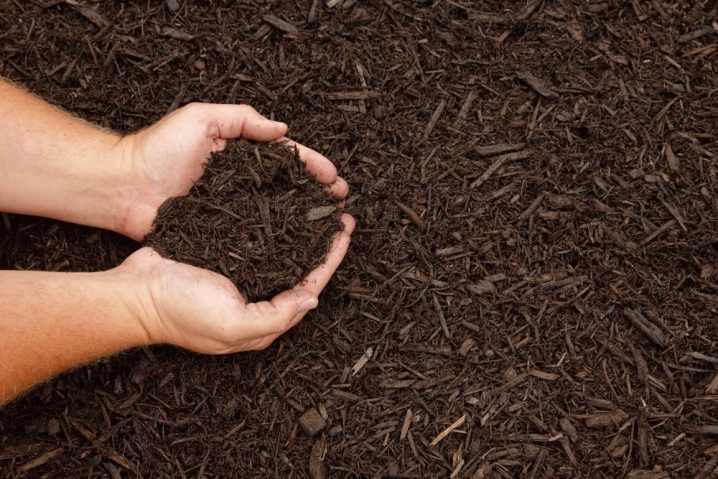
Synthetic materials
Geosynthetic materials are often used for winter shelter. Geotextiles of black color with a density of 60g / m2 are best suited. The material is resistant to bacteria, rot, damage and low temperatures. Usually it is spread on the garden bed, covering the entire surface around the strawberries, holes are made at the planting sites. A dense film is often used.
Strawberries and strawberries are recommended to be mulched in the fall before the onset of frost. This becomes a good protection of the roots from freezing.
No need to cover ahead of time: the bushes will perepereut and grow.
In the spring, it is recommended to remove the mulch layer until the soil warms up and the return frosts stop. After that, the soil is loosened, fertilized, watered and mulched again.
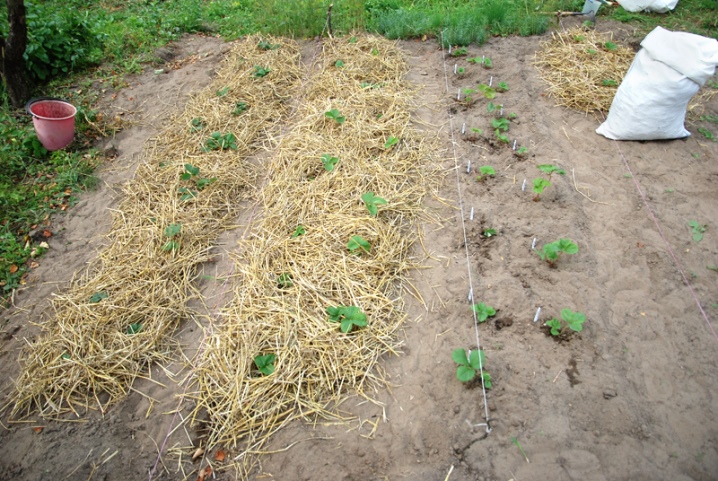
Treatment
The most common disease is spotting. In autumn, diseased plants or for prophylaxis are treated with a 1% solution of Bordeaux liquid.
-
For a composition in 2 liters of warm water, add 100 g of the active substance, mix thoroughly.
-
A lime mortar is prepared separately.
-
The resulting compositions are mixed in an enamel or plastic container.
-
Apply immediately after preparation - in the morning and in the evening. After rain, spraying must be repeated.

The most dangerous pests are spider mites. For the prevention and destruction of insects, prepare the solution named below.
-
Add 2 tbsp to 10 liters of water. l. vegetable oil and the same amount of wood ash.
-
Pour in 2 tbsp. l. regular vinegar.
-
Grind 20 g of laundry soap on a grater. Pour into the composition, mix until smooth.
-
Treat bushes and soil around. Carried out in October, 2-3 weeks before the first cold snaps.

To combat the strawberry mite, drugs are also used: "Aktara", "Bi-58", bioinsecticide "Fitoverm". You can prepare a composition from Bordeaux liquid and colloidal sulfur (for 10 liters of the mixture + 100 g of sulfur), this treatment will also be an excellent prevention of fungal diseases.
The beds are treated not only with chemicals, although it is believed that autumn is the most successful time of the year for their use.
There are a large number of biological products that destroy pests, increase plant immunity, and improve the quality of the soil. These are Zircon, Fitoverm, Fitosporin, Aktofit.

Shelter
To protect strawberries and strawberries in the open field, it is necessary to make a reliable shelter from frost. The most vulnerable is not the aerial part, but the roots: they freeze at temperatures below -15 degrees. Autumn plantings with young seedlings and remontant species must be covered.
As usual, the bushes hibernate in the garden under the cover of snow. Agrofibre or layers of mulch are often used to protect the roots. Pre-weed and loosened, then a layer of mulch is poured around the bushes and in the aisles.
The activity helps prevent the appearance of weeds, pests and fungal diseases.

Before the onset of cold weather, the bushes are covered with spruce branches or dry foliage, straw. Weak and remontant species are often recommended to be covered with agrofibre or a thick film (on pre-installed supports - in the form of an arc or frame). The material is laid on top of the structure - it should not come into contact with the leaves, otherwise the culture will freeze. To prevent the berry planting from quailing, not to create an environment for fungi and bacteria, it is necessary to make holes for ventilation.
They cover the beds for wintering only after the onset of frost - so the bushes will become hardened and easily endure the cold. After the first snowfalls, snow is poured on them and left until spring - this way the culture will winter better.
You can install a small fence around the beds to keep the snow from blowing away.
The nuances of preparing different types of strawberries
The procedure for preparing different varieties for winter has a lot in common. There is a difference in how regular and remontant varieties are prepared.
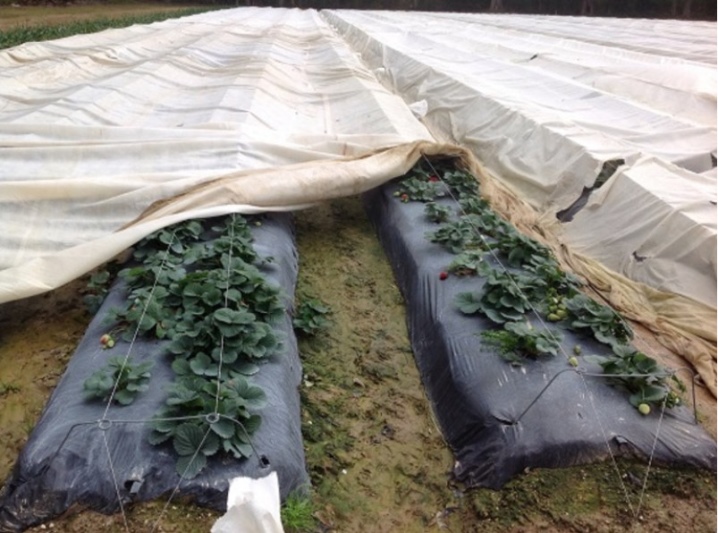
Regular
Common strawberry varieties bloom early and end fruiting in July. They begin to prepare for wintering in August. Dry and weak leaves are removed from the bushes, loosened, fertilized and watered.
For the prevention of pests and drying out of the soil, mulch is laid.
For the winter period, the beds are mulched to insulate the roots, they do this after the onset of frost - they are spread with a wide layer of sawdust or needles.
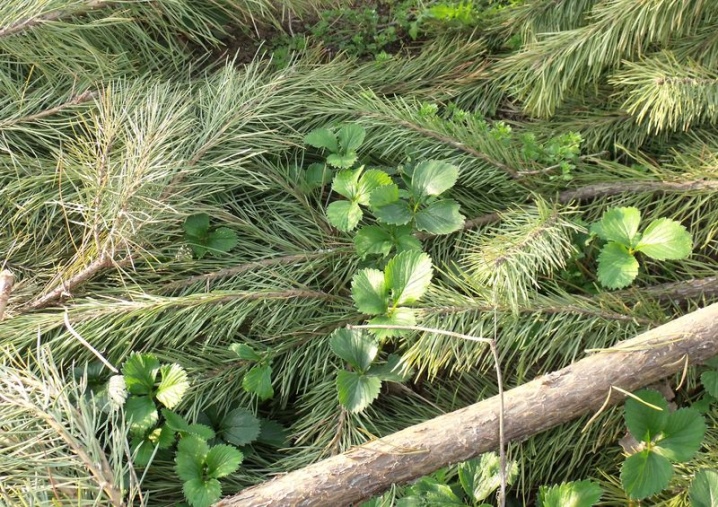
Repaired
The main difference between these varieties is the ability to bring several harvests per season. Winter preparations begin only in September.Be sure to regularly feed and moisturize, the culture must collect a sufficient supply of water. Watering is carried out 2 times a day: 5 liters of water per 1 m2.
The variety continues to form peduncles until frost. Flowers can be cut a month before the onset of cold snaps: after the first frost, they turn black and die, their growth will only deplete the culture.
When night temperatures drop, the fruit-bearing bushes are covered with white agrospan until the berries ripen. With the onset of cold weather, unripe fruits and dry shoots are cut off.
Repaired species need treatment from diseases and pests, feeding and high-quality shelter, as they do not tolerate frost well. It is recommended to lay a thick layer of straw mulch, and in cold climates, build a canopy made of synthetic materials.
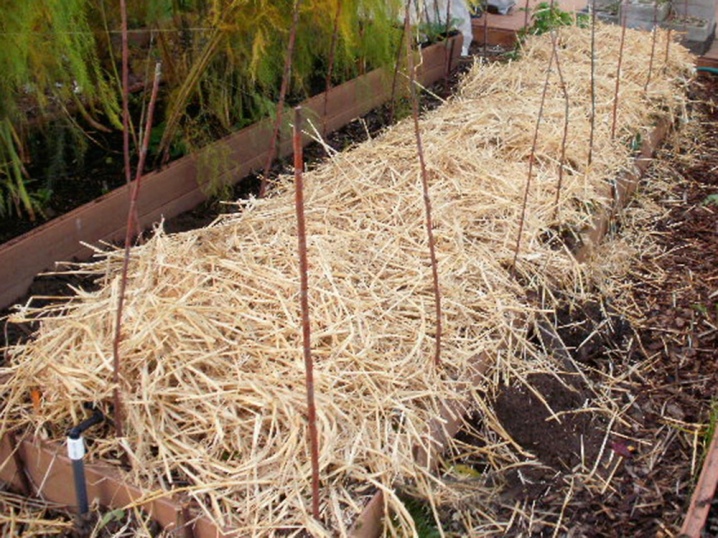













The comment was sent successfully.